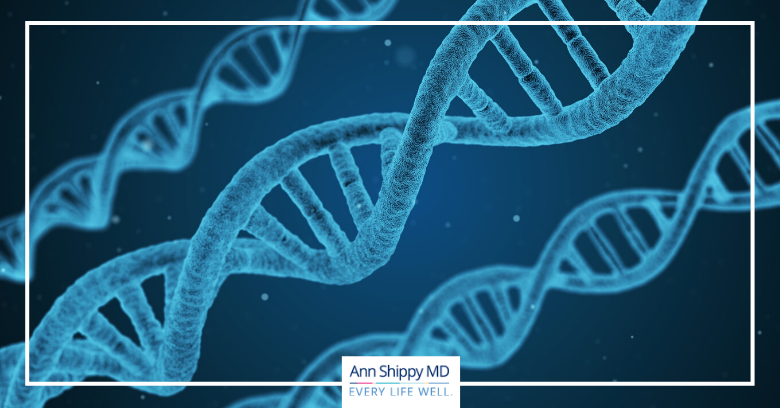In the span of your lifetime, molecular exchanges within your cells will leave biological imprints that shape your health and the health of your future generations.
Welcome to Epigenetics 101. Epigenetics is the study of changes in organisms that comes by way of gene expression (rather than DNA tampering). DNA has genes encoded in it. Gene expression is when genes “talk” to the nucleus of a cell and instruct it on how to behave. They tell a cell to act like a heart cell or a skin cell or a brain cell. These instructions change over time and can be affected by the food you eat, where you live, your career, your age, etc.
Here are some basic understandings of epigenetics:
Histones
In a TED talk, geneticist Courtney Griffins, explained that there are about six feet of DNA strands inside every cell in your body. To accommodate all that DNA we have histones. DNA winds itself around histones, which are clusters of protein. Griffins suggested thinking of histones as “molecular spools.” There are about 30 million spools in each cell.
Epigenome
The outside layer of histones is called the epigenome. Epigenome literally means “on top of genome.” The epigenome is the outside layer of the gene strands of DNA. (Remember, DNA is wrapped around histones.) There are epigenetic marks or chemical tags that sit on the gene strands. These tags react to signals from the outside world such as stress or toxic chemical exposure. The epigenetic tags also govern the chromatin’s physical shape.
Chromatin
Histones combined with DNA create a structure called chromatin. Think of several molecular spools clumped up together. When chromatin is tightly knit, the genes are unreadable. They’re turned “off” to the cell. Researchers are learning how to turn off some genes that can lead to cancer, Alzheimer’s disease and the pathogenesis of many other illnesses. When they’re loose they’re readable and tell the cell how to behave through a molecular exchange called DNA methylation.
DNA Methylation
To help cells interpret the instructions from genes there’s DNA methylation. This process is done with little groups of carbon and hydrogen called “methyl groups.”
Methyl groups attach to a gene and guide the gene, instructing the cell nucleus. DNA methylation controls gene expression with a molecular exchange. When the cell follows the instructions from the methyl group, this is called gene expression—thus, the basis of epigenetics.
Existing technology has made DNA methylation easy to study. DNA methylation was first discovered in human cancer in 1983 and has since been observed in many other illnesses and health conditions.
Wise Choices
To better understand the genesis of disease, scientists back in the 1970s began digging deep into cell behavior. This birthed epigenetics. Epigenetics is showing us that the spate of epidemics, like diabetes and cancers, may have begun their genetic imprint on the from DNA generations ago. Since it’s still a new science we continue discovering what it can do for us.
Epigenetics is nature’s way of changing cells over time. During puberty, pregnancy, menopause and other changes our epigenome directs our cells with different instructions. Sometimes, they react to toxic exposure. This can lead to methyl groups giving poor instructions to genes. Methyl groups can even bind themselves to the wrong cells. Cells with the wrong methyl groups can become abnormal and lead to diseases like cancer.
Epigenetics reminds us that it’s not only nature that has control over biology. We are discovering how much influence we have over our genetic imprint. This empowers us to make wise choices with our health.
To learn more, watch my video below, What is Epigenetics?
SOURCES:
https://www.ncbi.nlm.nih.gov/pmc/articles/PMC1392256/
http://www.news-medical.net/life-sciences/What-is-DNA-Methylation.aspx
https://www.youtube.com/watch?v=kp1bZEUgqVI
https://www.youtube.com/watch?v=JTBg6hqeuTg













